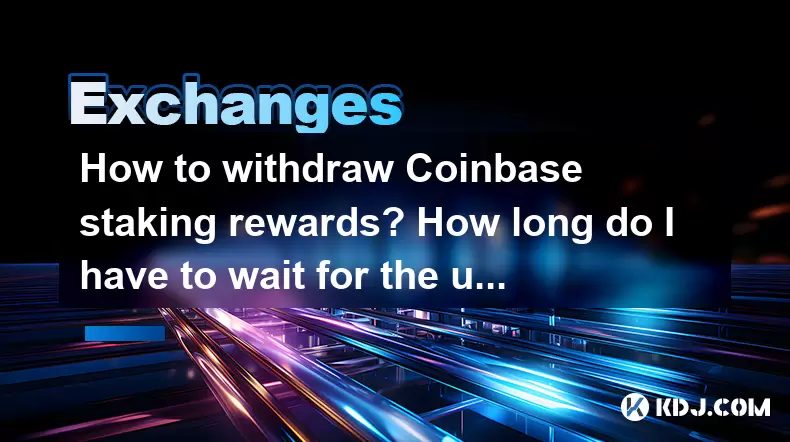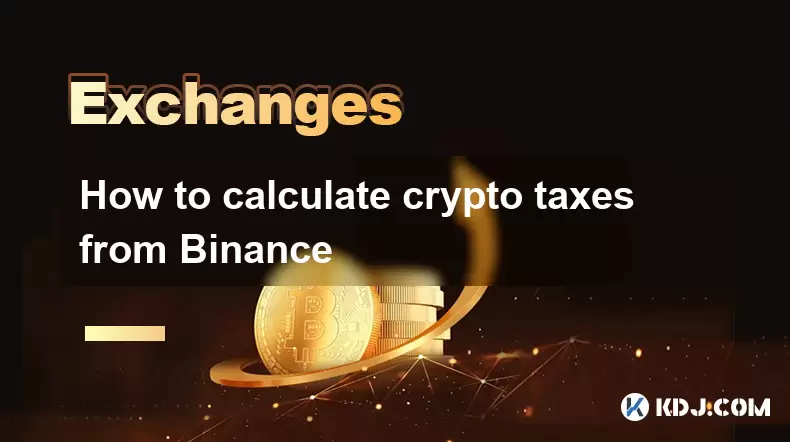-
 Bitcoin
Bitcoin $117500
2.15% -
 Ethereum
Ethereum $3911
6.19% -
 XRP
XRP $3.316
10.79% -
 Tether USDt
Tether USDt $1.000
0.01% -
 BNB
BNB $787.2
2.24% -
 Solana
Solana $175.2
4.15% -
 USDC
USDC $0.9999
0.00% -
 Dogecoin
Dogecoin $0.2225
8.40% -
 TRON
TRON $0.3383
0.28% -
 Cardano
Cardano $0.7868
6.02% -
 Stellar
Stellar $0.4382
9.34% -
 Hyperliquid
Hyperliquid $40.92
7.56% -
 Sui
Sui $3.764
7.63% -
 Chainlink
Chainlink $18.48
10.66% -
 Bitcoin Cash
Bitcoin Cash $582.1
1.88% -
 Hedera
Hedera $0.2601
6.30% -
 Avalanche
Avalanche $23.33
4.94% -
 Ethena USDe
Ethena USDe $1.001
0.02% -
 Litecoin
Litecoin $122.3
2.04% -
 UNUS SED LEO
UNUS SED LEO $8.969
-0.27% -
 Toncoin
Toncoin $3.339
0.86% -
 Shiba Inu
Shiba Inu $0.00001287
4.30% -
 Uniswap
Uniswap $10.43
7.38% -
 Polkadot
Polkadot $3.861
5.08% -
 Dai
Dai $1.000
0.02% -
 Bitget Token
Bitget Token $4.513
3.41% -
 Monero
Monero $267.7
-6.18% -
 Cronos
Cronos $0.1499
4.14% -
 Pepe
Pepe $0.00001110
5.15% -
 Aave
Aave $284.9
8.28%
How to withdraw Coinbase staking rewards? How long do I have to wait for the unlocking period?
Withdrawing staking rewards from Coinbase is easy, but remember the unlocking period: up to 28 days for ETH, 5-10 days for ADA, 2-3 days for SOL, and 14 days for XTZ.
May 18, 2025 at 04:22 pm

Withdrawing your staking rewards from Coinbase is a straightforward process, but understanding the unlocking period can be crucial for planning your financial moves. In this article, we will guide you through the steps to withdraw your staking rewards and provide detailed information about the unlocking period associated with different cryptocurrencies on Coinbase.
Understanding Coinbase Staking Rewards
Coinbase offers staking services for various cryptocurrencies, allowing users to earn rewards by holding their assets on the platform. Staking is a process where you participate in the operation of a blockchain network and, in return, receive rewards. These rewards are typically distributed periodically, and once you accumulate them, you might want to withdraw them to your wallet or use them for other purposes.
Steps to Withdraw Staking Rewards on Coinbase
To withdraw your staking rewards from Coinbase, follow these detailed steps:
- Log into Your Coinbase Account: Open the Coinbase website or app and enter your login credentials to access your account.
- Navigate to the Staking Section: Once logged in, go to the "Earn" or "Staking" section of the platform. This section will show you all the assets you are currently staking and the rewards you have earned.
- Select the Asset for Withdrawal: Choose the cryptocurrency for which you want to withdraw the staking rewards. Click on the specific asset to see the details of your staking rewards.
- Initiate the Withdrawal: Look for an option like "Withdraw" or "Transfer" next to your staking rewards. Click on it to start the withdrawal process.
- Enter the Withdrawal Details: You will be prompted to enter the amount of rewards you wish to withdraw and the destination address. Ensure you enter the correct address to avoid losing your funds.
- Review and Confirm the Transaction: Double-check all the details, including the amount and the destination address. Once you are satisfied, confirm the transaction.
- Wait for the Transaction to Process: After confirmation, the transaction will be processed. The time it takes to complete can vary depending on the network congestion and the specific cryptocurrency.
Understanding the Unlocking Period
The unlocking period is the time you must wait after initiating a withdrawal before you can access your staking rewards. This period varies depending on the cryptocurrency and the specific staking program. Below, we will discuss the unlocking periods for some of the most popular cryptocurrencies on Coinbase.
Unlocking Period for Ethereum (ETH) Staking Rewards
For Ethereum (ETH), the unlocking period can be quite significant. When you decide to withdraw your ETH staking rewards, you need to be aware of the following:
- Withdrawal Request: Once you initiate a withdrawal request for your ETH staking rewards, the process begins.
- Unstaking Period: The unstaking period for ETH can last up to 28 days. During this time, your rewards are locked and cannot be accessed.
- Transaction Processing: After the unstaking period, the actual withdrawal transaction will be processed, which can take additional time depending on the Ethereum network's congestion.
Unlocking Period for Cardano (ADA) Staking Rewards
Cardano (ADA) has a different approach to staking and unlocking periods. Here's what you need to know:
- Epochs and Rewards: Cardano operates on epochs, which are roughly five days long. Staking rewards are distributed at the end of each epoch.
- Withdrawal Process: To withdraw your ADA staking rewards, you initiate the withdrawal process as described earlier.
- Unlocking Period: The unlocking period for ADA is typically 1 to 2 epochs, meaning you might have to wait around 5 to 10 days before you can access your rewards.
Unlocking Period for Solana (SOL) Staking Rewards
Solana (SOL) offers a more flexible staking system with a shorter unlocking period. Here's the process:
- Staking and Rewards: SOL staking rewards are distributed regularly, and you can initiate a withdrawal at any time.
- Withdrawal Request: Once you request a withdrawal, the process begins.
- Unlocking Period: The unlocking period for SOL is typically 2 to 3 days. This relatively short period allows for quicker access to your staking rewards.
Unlocking Period for Tezos (XTZ) Staking Rewards
Tezos (XTZ) has a unique staking mechanism with its own set of rules for unlocking periods. Here's what you need to know:
- Baking and Rewards: In Tezos, staking is referred to as baking, and rewards are distributed regularly.
- Withdrawal Process: When you want to withdraw your XTZ staking rewards, you initiate the withdrawal process.
- Unlocking Period: The unlocking period for XTZ is typically 14 days. This period is shorter than ETH but longer than SOL and ADA.
Frequently Asked Questions
Q: Can I stake multiple cryptocurrencies on Coinbase at the same time?
Yes, you can stake multiple cryptocurrencies on Coinbase simultaneously. Each cryptocurrency will have its own staking rewards and unlocking periods, so you can manage them independently.
Q: What happens if I want to withdraw my staked assets instead of just the rewards?
If you want to withdraw your staked assets, the process is similar to withdrawing staking rewards, but the unlocking period may be different. For example, with Ethereum, the unlocking period for staked ETH is also 28 days, similar to the rewards.
Q: Are there any fees associated with withdrawing staking rewards from Coinbase?
Coinbase may charge a small fee for processing the withdrawal of staking rewards. The exact fee can vary depending on the cryptocurrency and the network conditions at the time of withdrawal. Always check the fee details before confirming your transaction.
Q: Can I reinvest my staking rewards without withdrawing them?
Yes, you can choose to reinvest your staking rewards directly on Coinbase without withdrawing them. This option allows you to compound your rewards and potentially increase your earnings over time.
Disclaimer:info@kdj.com
The information provided is not trading advice. kdj.com does not assume any responsibility for any investments made based on the information provided in this article. Cryptocurrencies are highly volatile and it is highly recommended that you invest with caution after thorough research!
If you believe that the content used on this website infringes your copyright, please contact us immediately (info@kdj.com) and we will delete it promptly.
- XRP ETF, Bitcoin ETF, and Japan: A New Era for Crypto Investing?
- 2025-08-08 14:30:12
- Crypto, Congress, and Bills: Navigating the Regulatory Landscape in 2025
- 2025-08-08 14:30:12
- Union Jack Oil, Unused Gas, and Bitcoin: A New York Minute on UK's Crypto-Energy Play
- 2025-08-08 14:50:12
- Bitcoin Price: Bullish Flag Points to $123K Breakout?
- 2025-08-08 14:50:12
- Crypto Group's WNBA Dildo Toss: Meme Coin Mania or Just Plain Dumb?
- 2025-08-08 14:55:13
- Stablecoins, Hong Kong, and On-Chain Finance: Navigating the Regulatory Maze
- 2025-08-08 12:30:12
Related knowledge

How to use margin trading on Poloniex
Aug 08,2025 at 09:50am
Understanding Margin Trading on Poloniex

How to use advanced trading on Gemini
Aug 08,2025 at 04:07am
Understanding Advanced Trading on GeminiAdvanced trading on Gemini refers to a suite of tools and order types designed for experienced traders who wan...

How to deposit USD on Bitstamp
Aug 07,2025 at 05:18pm
Understanding Bitstamp and USD DepositsBitstamp is one of the longest-standing cryptocurrency exchanges in the industry, offering users the ability to...

How to use the Kraken Pro interface
Aug 08,2025 at 09:57am
Understanding the Kraken Pro Interface LayoutThe Kraken Pro interface is designed for both novice and experienced traders seeking a streamlined experi...

How to find my transaction ID on Gemini
Aug 08,2025 at 12:50am
Understanding the Transaction ID in Cryptocurrency ExchangesA transaction ID (TXID) is a unique alphanumeric string that identifies a specific transfe...

How to calculate crypto taxes from Binance
Aug 08,2025 at 07:56am
Understanding Cryptocurrency Taxation on BinanceCalculating crypto taxes from Binance requires a clear understanding of how tax authorities classify d...

How to use margin trading on Poloniex
Aug 08,2025 at 09:50am
Understanding Margin Trading on Poloniex

How to use advanced trading on Gemini
Aug 08,2025 at 04:07am
Understanding Advanced Trading on GeminiAdvanced trading on Gemini refers to a suite of tools and order types designed for experienced traders who wan...

How to deposit USD on Bitstamp
Aug 07,2025 at 05:18pm
Understanding Bitstamp and USD DepositsBitstamp is one of the longest-standing cryptocurrency exchanges in the industry, offering users the ability to...

How to use the Kraken Pro interface
Aug 08,2025 at 09:57am
Understanding the Kraken Pro Interface LayoutThe Kraken Pro interface is designed for both novice and experienced traders seeking a streamlined experi...

How to find my transaction ID on Gemini
Aug 08,2025 at 12:50am
Understanding the Transaction ID in Cryptocurrency ExchangesA transaction ID (TXID) is a unique alphanumeric string that identifies a specific transfe...

How to calculate crypto taxes from Binance
Aug 08,2025 at 07:56am
Understanding Cryptocurrency Taxation on BinanceCalculating crypto taxes from Binance requires a clear understanding of how tax authorities classify d...
See all articles

























































































